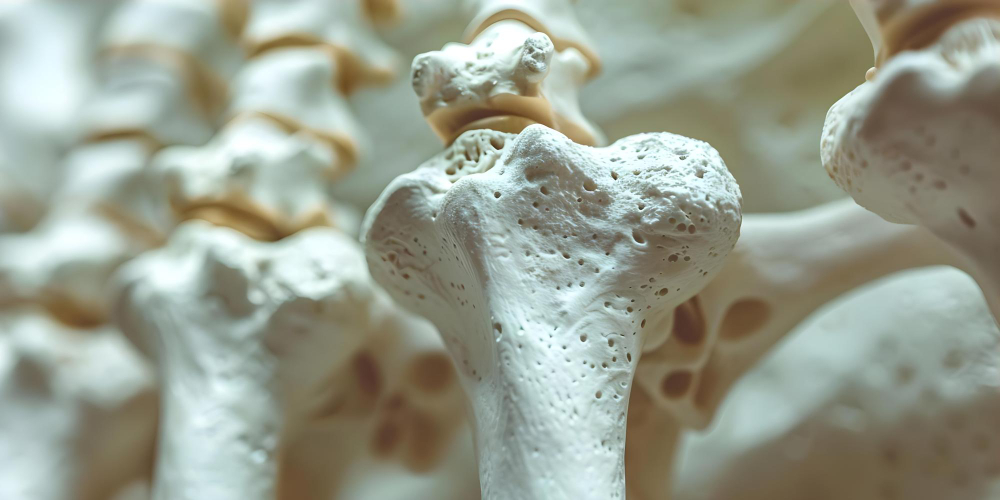Bones play a crucial role in our day-to-day life. When they’re strong, we hardly notice them. But if conditions like osteopenia arise, it can be a different story. Osteopenia symptoms often sneak up without much warning, but being aware is half the battle. Learn to spot the tell-tale signs and take proactive steps to protect your bones.
Recognizing Osteopenia Symptoms: The Silent Signs
Osteopenia is a bone condition where bones lose minerals and strength. It’s like a precursor to osteoporosis. Sadly, there aren’t many clear signals that shout out this issue. This condition can slowly develop without many or any obvious osteopenia symptoms at first. So, why should you care?
Understanding the early symptoms of osteopenia can help you take action before your bones become more fragile. Here are the subtle signs to watch for:
- Minimal stature reduction – A slight loss in height could indicate changes in bone density.
- Brittle bones – Bones might seem more fragile. They might break easily or feel “off” in terms of strength.
- Unexplained pain – You might experience vague aches in your bones or joints without any clear reason.
The key is not to ignore these signals. They might sound harmless, but if they persist, it’s important to pay attention.
The medical diagnosis of osteopenia often involves checking bone density. One common method is the DEXA scan. It’s a routine test that measures bone mineral density. Doctors might advise this if you’re at risk or notice any signs of osteopenia need checking.
Who is at risk? It’s important to know your risk osteopenia causes.
- Family history – If your relatives deal with bone issues, you might be at risk too.
- Age factors – It’s common as you age, especially for women after menopause.
- Lifestyle choices – Lack of exercise and poor diet can contribute.
Regular screenings like DEXA scans become crucial, especially for those falling into these categories. Catching the early symptoms of osteopenia can prevent or slow progress to more severe issues. Don’t wait for noticeable damage. Knowledge and timely testing go a long way in managing bone health.
Empowering Your Bone Health: Practical Lifestyle Approaches
An ounce of prevention is worth a pound of cure, right? Let’s look at lifestyle changes to improve bone health.
Exercise
Bones stay healthy when we keep moving. Exercises help at any age, but it’s crucial for older adults. Here are a few exercises to consider:
- Weight-bearing exercises – Think walking, jogging, and climbing stairs.
- Strength training – Lifting weights helps build bone and muscle.
- Balance exercises – Tai chi or yoga can help prevent falls and improve stability.
Ditch Harmful Habits
Habits like smoking and drinking too much cause harm. They speed up bone loss. So reducing them can help keep your bones strong.
Diet
- Calcium-rich foods: Milk, cheese, and yogurt are great. Don’t like dairy? Try almonds or leafy greens.
- Vitamin D: It helps the body absorb calcium. Sunlight is a natural source. In places like India, stepping out for a bit can help.
- Other nutrients: Foods like bananas provide magnesium and potassium. They are also important for bone health.
By understanding and using these practical approaches, you’re taking control of bone health. Little changes in your daily routine can have lasting impacts.
Dispelling Myths: The Truth About Osteopenia
Misunderstandings about osteopenia treatment options float around, making this condition seem exclusive to one end of the age spectrum or one lifestyle issue.
Bones Aren’t Just an Elderly Concern
Many think only older folks need to worry. Wrong! Young people should also be aware. Building bone strength early can prevent issues later.
Dairy Myths
Some people hear that you should drink tons of milk, but balance is key. While dairy is beneficial, there are other sources of vital nutrients.
Backing with Evidence
Science shows many steps to keep bones strong:
- Nutrition matters – A diverse diet with calcium and vitamin D supports bones.
- Activity counts – Regular exercise stops bones from weakening.
Countering osteopenia clinical features with factual steps ensures informed decisions. Don’t let myths guide you.
Conclusion: Taking Bold Steps Towards Stronger Bones
In the end, proactive behavior stands as your best defense against osteopenia symptoms. By embracing lifestyle changes and seeking regular osteopenia treatment options through screenings, you keep bone strength in check.
Start today. Make these tips part of your routine. It’s never too early or too late. Keep an eye on those bones and make regular doctor visits to stay ahead.
Being equipped with this knowledge will help you converse easily with healthcare professionals. Bold steps now will pave the way for a robust future. Your bones will surely thank you later!
